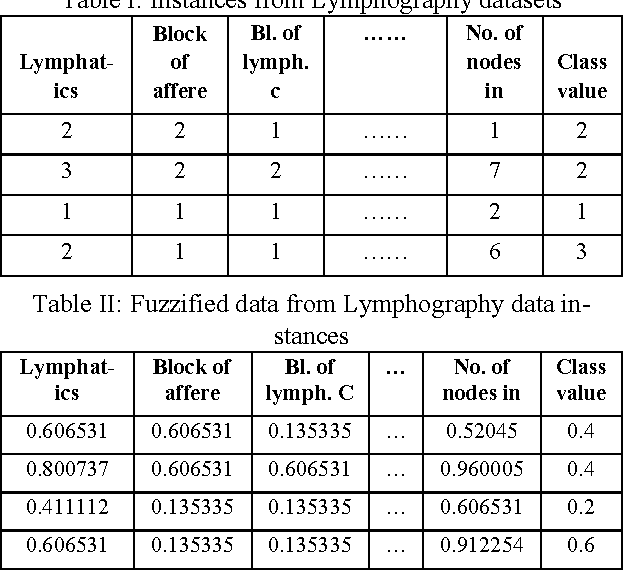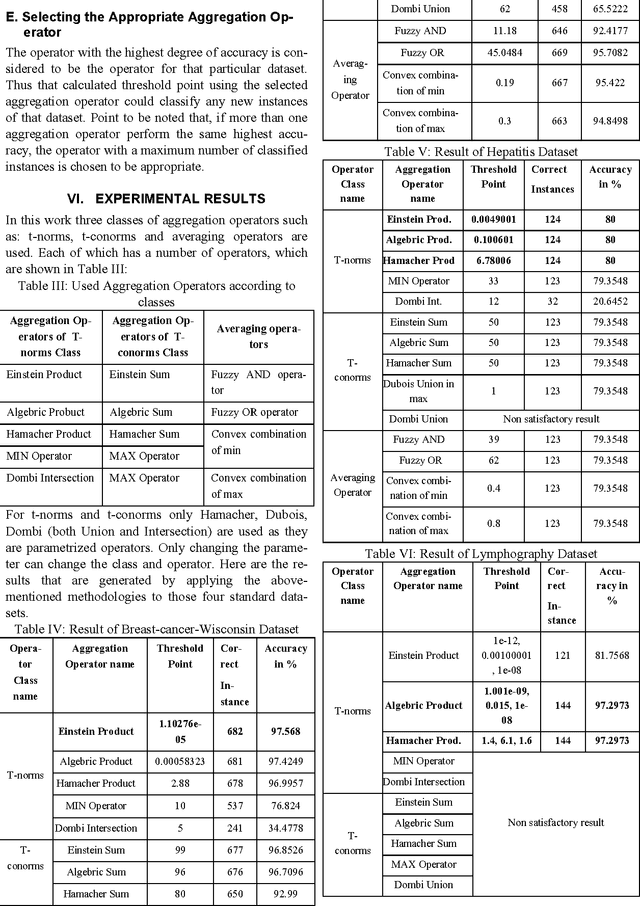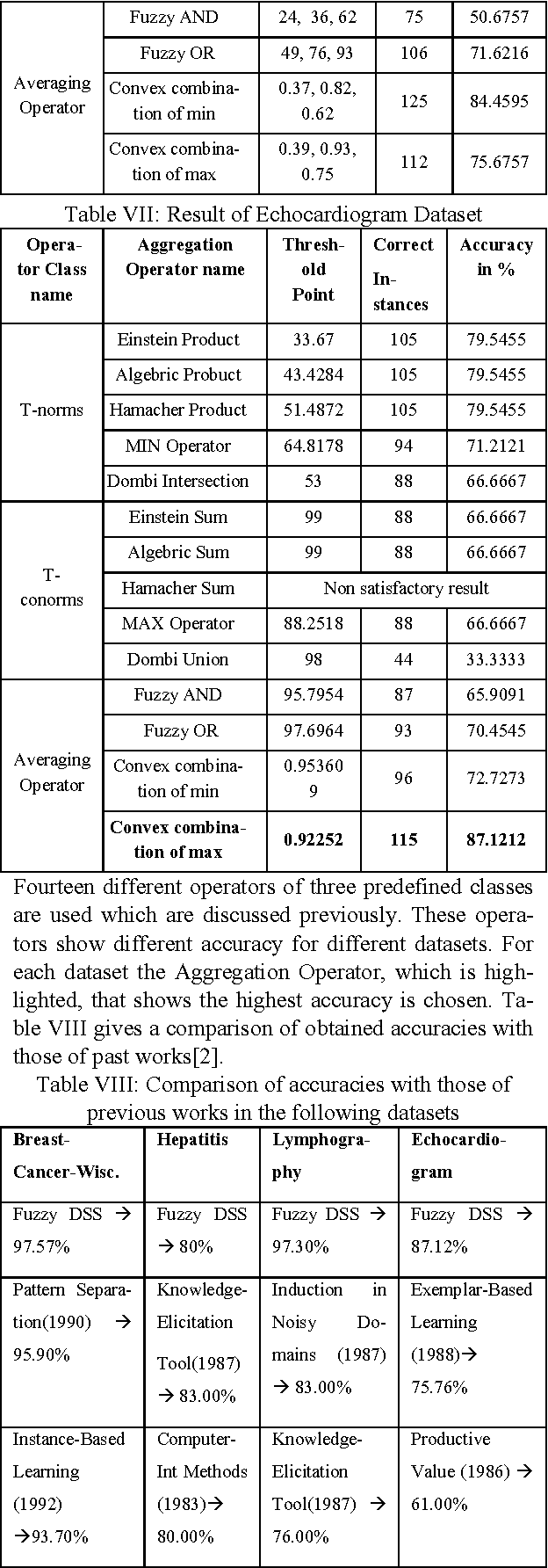On Appropriate Selection of Fuzzy Aggregation Operators in Medical Decision Support System
Paper and Code
Apr 09, 2013


The Decision Support System (DSS) contains more than one antecedent and the degrees of strength of the antecedents need to be combined to determine the overall strength of the rule consequent. The membership values of the linguistic variables in Fuzzy have to be combined using an aggregation operator. But it is not feasible to predefine the form of aggregation operators in decision making. Instead, each rule should be found based on the feeling of the experts and on their actual decision pattern over the set of typical examples. Thus this work illustrates how the choice of aggregation operators is intended to mimic human decision making and can be selected and adjusted to fit empirical data, a series of test cases. Both parametrized and nonparametrized aggregation operators are adapted to fit empirical data. Moreover, they provided compensatory properties and, therefore, seemed to produce a better decision support system. To solve the problem, a threshold point from the output of the aggregation operators is chosen as the separation point between two classes. The best achieved accuracy is chosen as the appropriate aggregation operator. Thus a medical decision can be generated which is very close to a practitioner's guideline.
 Add to Chrome
Add to Chrome Add to Firefox
Add to Firefox Add to Edge
Add to Edge